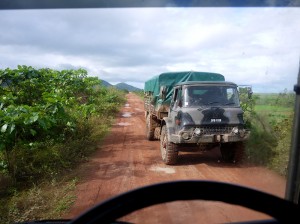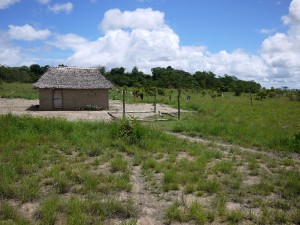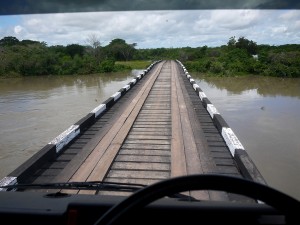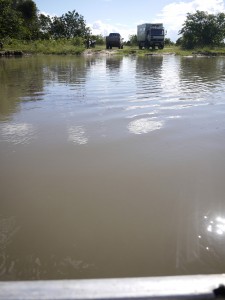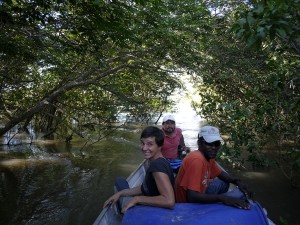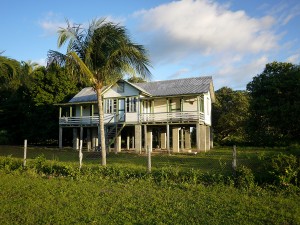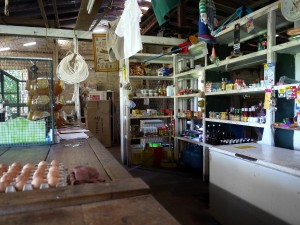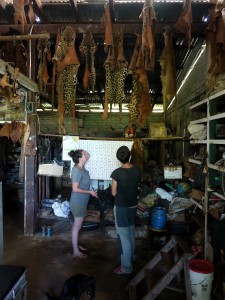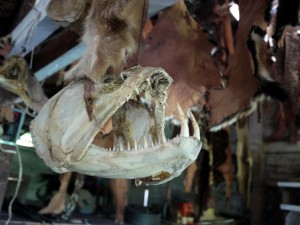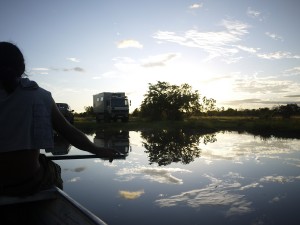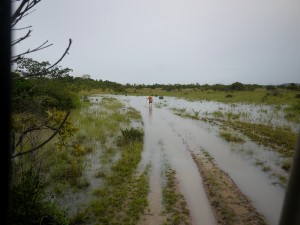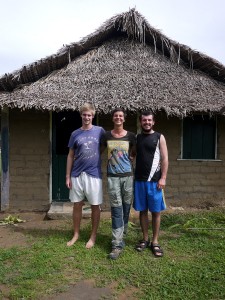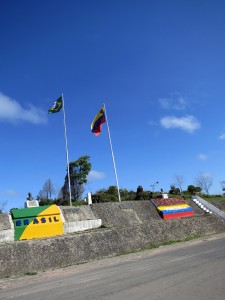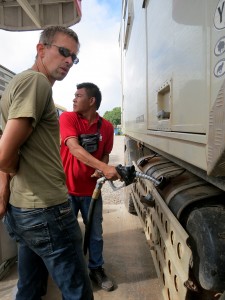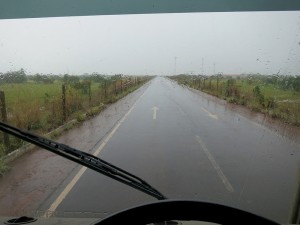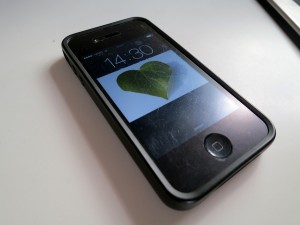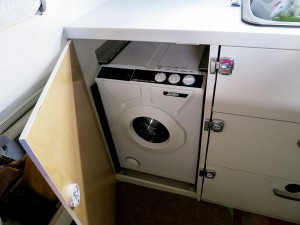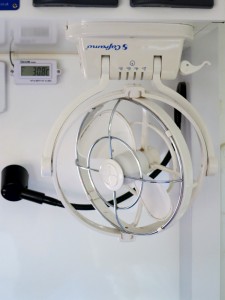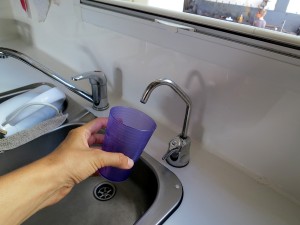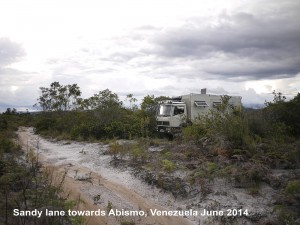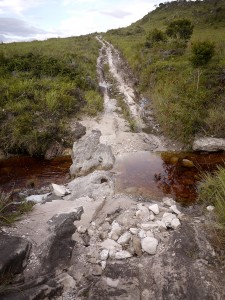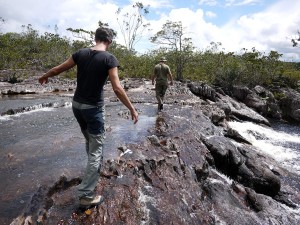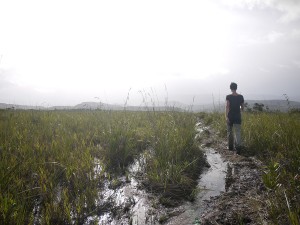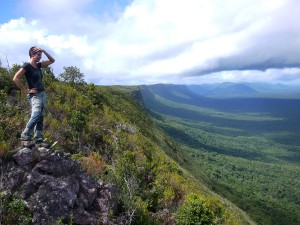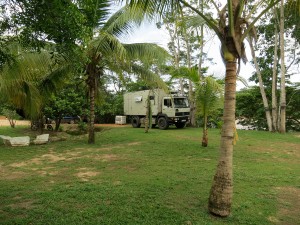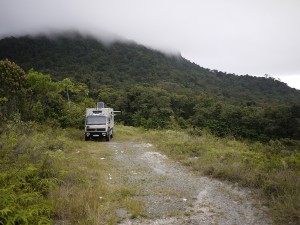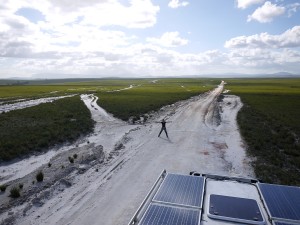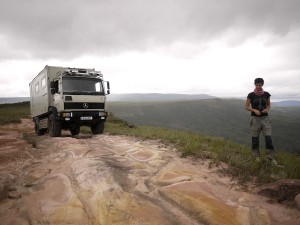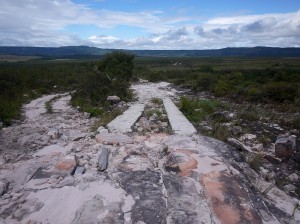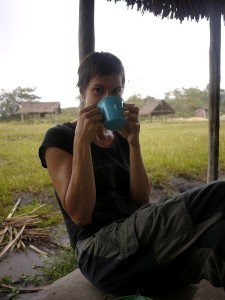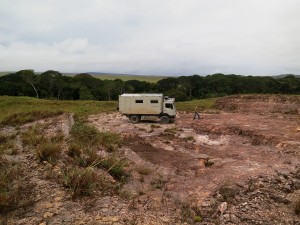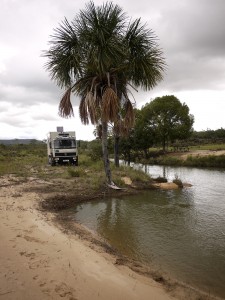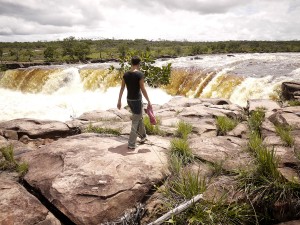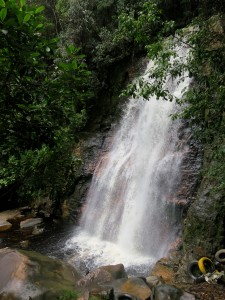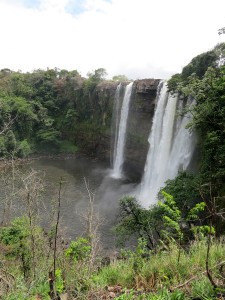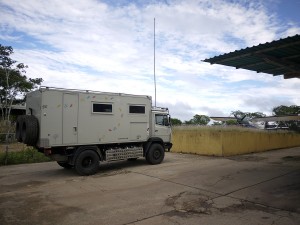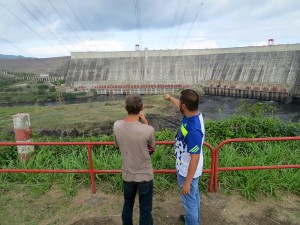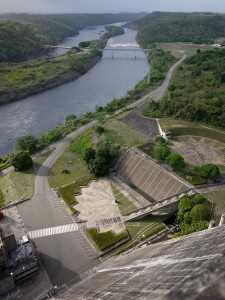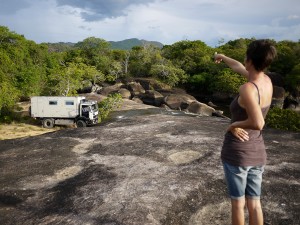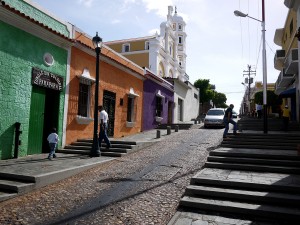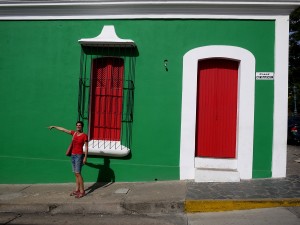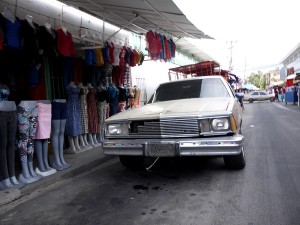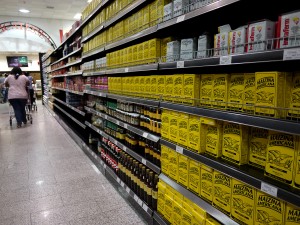As our “style” of this journey, we don’t plan far ahead, we don’t have a schedule nor a route. Though we might have a vague “wanna go there/don’t wanna go there” feeling. At the beginning didn’t “feel like” going to any of the Guyanas (Guyana, Suriname and French Guiana) but somewhere in Venezuela -perhaps because we were next door to Guyana we considered to visit it. We read up on it and it seemed like a place worth visiting. At that point in the south of Venezuela we bumped into a guy who just came back from Guyana (2 weeks travelling) and his description of it just fired us up more.
Britain took control of the country from the late 1700’s – early 1800’s until in 1970 Guyana became an independent republic with and elected president. Guyana, despite located on the South American continent is actually part of the Caribbean Community and has strong relations with Caribbean nations. The country has a long-running land disputes with Suriname and Venezuela (the one with Suriname more or less has been cleared recently but the one with Venezuela has been going on for over 20 years and the two countries relations is a bit shaky)
The country is about the same size as England but with only 750.000 population. They speak English as their first language and -at least where we visited they are very environment oriented and live in rhythm with nature.
There are no paved roads in Guyana. Their “M1” (south to north highway) is a nearly 600km mud road, that just 20 something years ago was only a cattle herding path from Lethem to Georgetown and with a vehicle took over a week to get from south to north. Nowadays it takes 2-4 days. Obviously better in the dry season and can be quite challenging in the wet season.
Somewhat British culture and the language has been left behind and I could sense a certain connection to Britain in this jungle-filled, hot and humid tropical place. It is certainly mixed with Caribbean jolly, laidback attitude or the soft and kind attitude of the Amerindians but there is this nice old-fashion Britishness behind it. How people talk, their manners. They take their time, they are kind and polite. They don’t greet each other with a Hi or Hey. I love how they say Good Day, Good Afternoon and Good Night (instead of Good Evening). Even the teenagers. They always ask how everything is and listen to your answer. Young people give respect for the older and call them Uncle and Aunty. We met a sweet guy -bit tipsy one evening. He was one of the Elders from a Makushi village (Makushi is one of the tribes in Guyana) and after a long chat he asked us, innocently and genuinely which tribe we were from.
Before we got to Guyana John emailed to the owner of Dadanawa Ranch. We read about this remote but very active cattle farm that we could partake in ranch work, help in anyways on the farm besides hiking, bird watching and such. It is a family ranch and the owner and his wife weren’t there. Sadly the wife is ill and getting treatment abroad for a year now but the friendly owner directed us to his daughter and son to get in touch with them. We found Keyla, his daughter in Lethem -as she is working for a conservation international organization and partially lives in town who was more than happy to hear from us. She and her partner, Leroy were packing up that morning to leave town for Dadanawa and she suggested to follow them.
That afternoon we left but after a few km’s down the dirt, bumpy road we suggested them to go ahead, give us directions to the first town we’ll stop for the night and we’ll meet them there as we were much slower than they were with their light Toyota pickup.
The drive was very beautiful. It is more like a savannah with big hills at the background. It is super dry in the dry season and flooded with mud in the rainy season.
After a few puddles John noticed the clutch was stiffening up. This happened before somewhere in Central America, perhaps in Belize also in a rainy season but john checked everything, plus we had it checked later at the Mercedes garage and there was no leak or anything and the clutch sort of healed and was OK after that. But here it started again and John was more cautious.
Dirt roads occasionally leading away from the main road towards small Amerindian villages and communities. Even in this epic place the houses and villages were neat dotted pretty mud huts with straw roof and their fore garden filled with flowers and mango trees -and all of them had their own solar system with portable panels (every village, every house has one from the government) instead of using generators.
Just after 5PM we arrived in the Makushi village where everyone seemed to know we were coming. Very kindly they led us to someone’s land with a little convenient shop to park up for the night. Keyla and Leroy were on another farm nearby and they organised a guide for us tomorrow to come with us and show the way to Dadanawa.
We hardly parked up when people were gathering around Burt chatting and being curious who we are and where we were from. Two young British guys appeared, who were there on a year teaching contract at the village school. They were so shocked to see a British number plate vehicle that they left watching the world cup game that the whole village was watching in the small convenient shop.
The teachers hopped up and we had a few beers with them and a good chat. They were near the end of their contract and were looking forward going home. Once they are done the school has its summer break and the organization in Britain sends another pair of teachers from September. Each village in this area which has a school connected to the same charity organization so there are always young teachers from Britain all over the place here. We were happy to bumped into them as for us it was unique to meet Brits (after our fellow travellers the Brit Family) So it was fun.
The next morning Keyla and Leroy came to introduce our guide who will travel for us today. It was apparently important as the mud road leads all over the place and we could get lost plus as this was the rainy season – they had some heavy rain recently, we might have to go on a longer, more complicated route to cross a bridge while to the ranch while the Toyota can cross the river (as lighter) if the water isn’t too high.
It was a long day. but the drive was beautiful but bumpy. We were driving through huge puddles and deep slippery mud at places.
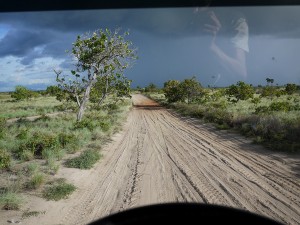

We also noticed that the clutch was back to normal again -which points it to the direction of some water leak or something but we can’t find any crack. We just have to go and see.
It was sometime mid-afternoon when we got to the bridge (our guide decided to lead us straight to the bridge because by then the flood was obvious and we had to take that route if we want to cross to the ranch) Well the bridge was there, the road was there -at least from this side, then as we crossed the bridge the road disappeared under the water. The river just swallowed it up for miles.
We turned back and in a couple of hours we got to the point on this side of the river where everyone (of the ranch) leaves their pickups and trucks in the entire wet season.
What they do -and what Keyla told us to do is park up here by the river and beat the big drum so they can hear it on the ranch and can come to pick us up with a boat. So that’s what we did. Drumming and honking and in 20 minutes they came. Also to pick up three barrels of fuel Keyla dn Leroy brought from Lethem. We locked up and popped in too. The river, in normal form is about 25-30 meters wide but this time it flooded the entire woods next to the river and it took 15 minutes for the little motor boat to cross the water.
Dadanawa Ranch is a huge cattle ranch and we came at an inconvenient time as it is the rainy season when nothing much happens. We knew this and still decided to come over. Keyla was very inviting and when we got here she was so happy to show us around. The farm is so big that they actually have a mini-village for their workers and families. The ranch has its own community even a convenient shop (which I loved!)
They have a couple of guest houses and Keyla offered for us to stay there. They have their family house where they just had their community meeting before we arrived. They are also involved in a birding project saving the red siskin which is native in the area and was near extinct a few year ago. Thanks to these guys it’s looking good now. (they can take you to places to see them in their own habitat) So we were taken around at this fascinating places and our hostess was so willingly explained everything from how the ranch is run through the paperwork to the type of fruit trees. I couldn’t help but love the place, even that I knew by this point that there’s not much we can do here.
Someone arrived when we finished our ranch tour telling us that we should move our truck because it is close to be under water. The river was coming up and up and flooding the area more. Though it wasn’t raining right here it must’ve been raining further up the river.
We said thanks and goodbye to Keyla and the guys and hopped in to a motor boat to get back. It was about 5-6PM. Yep the water almost touching BURT’s front wheels when we got to the other side. Which was amazing as we parked pretty far away from the river bank on a small hill. Anyway we moved back and levelled out for the night. We chatted a bit with the guys who took us over then said goodnight and started making dinner and had an early night.
All night was raining and so was all morning. Really thick rain… Despite we wanted to spend the day on the ranch we decided to pack up and make our way back. We didn’t know for how long the rain was going to last. If it was going on for even just the day, we would probably have to stay here for a week or so (if it doesn’t rain anymore, which is unlikely in the season) to wait until it’s dry enough so we’d be able to drive out. We wrote a note put it in a ziploc and left it on Justin’s (Keyla’s brother) car windshield.
I remembered a few tricky parts on the way here and I knew if there was any rain it would be worse. Well, if these places look really bad we just have to take it slow or stop, look and consider. When we got to the one them -the worst actually. Yesterday it was only a deep and large puddle but after the rain it became a lake. The river came up to this point and created an actual lake. It was still raining. John got out and walked into it. He only got half way which was as his mind couldn’t resist freaking him out with the piranhas and their cousins with long sharp teeth (we saw their terrifying sculls yesterday on the ranch) and caimans that live in the water and give you no time to escape once they get hold of you. So he turned back but he got to the deepest point. We prepared and pushed through the water and we made it. Then 2 minutes down the ray we stuck in a shallow slippery mud. It didn’t take long to get ourselves out and we were on our way again. A few hours later we reached my third concern which was a long way, very slippery clay mud on a narrow elevated single lane road, flood both sides. We got out to walk first. It was a sloshy ice rink, and the soles of our shoes picked up a layer of clay at every step. The wheels were covered with an inch and a half thick layer too. I freaked out but John was confident and so we made it. He navigated through this crap effortlessly and dealt so well with the sliding that threatened us to slip off the road. He was excellent.
Once we got to the Makushi village -where we stayed on our way down, we stopped for a break and catch my breath. We found the teachers and had a relaxing chat for a short while.
The sky cleared out by the afternoon and the road was considerably better form this point. We wanted to get as close to Lethem as possible so tomorrow we only have to drive a short distance, besides John was seriously concerned about the clutch now and thought that in Lethem we will have to find a mechanic to have a look at it.
We made a good progress by 4-5PM and were looking for a spot to stop for the night -it isn’t hard. Everywhere is peaceful and beautiful. Though it is Indian land and better ask permission. We did in the Makushi village where they said we can stop wherever we want. So we were just looking out for a nice spot when the clutch snapped. I mean snapped. As John pushed the clutch in it just gave up and broke. Bugger. Of course there was a moment of looking-at-each-other-wide-eyed then had a think for a few minutes. We had the only option of stopping the engine, putting it in to low-3rd gear then start again and travel in that one gear.
Soon we found a peaceful place to stop for the night. While I was preparing dinner John took everything apart and found the problem. The water leaked into the flywheel. It wasn’t the water actually that caused the problem, it was the grit in the water of course which eventually caused a small (plastic) component to give up and break.
Knowing what the problem and cause was gave us power…or peace of mind… At least we knew what we need to deal with, who we need to find and what we will have to watch out in the future. This is an ongoing learning curve. Sometimes I’m still looking for a big purpose of this trip. Something we can gain from it and I have to realise that these things give us the lessons. Not necessarily truck mechanic stuff but dealing with sudden crisis. I remember driving down on M1 in England, delivering BURT to the port in Southampton and we ran out of diesel in one of our tanks (we were still new to the tank switch and had the wrong tank on) I was so stressed and nearly in tears. Now if that happens without a blink we jump out, tip the cab forward pump the air out of the fuel system and off we go. Takes about 3 minutes.
We had an early start the next day and when we got to Lethem, almost immediately John found just the right guy for fixing the problem. Tall Boy. (In Lethem, almost everyone has a nickname) Tall Boy had a few trucks and deals with mechanical issues on them with his two boys. When John was explaining the problem to him he knew exactly what the cause and the solution was.
We rolled up at his place and they immediately jumped on the problem. An hour later John came to say that we might stay the night here so Tall Boy can fix something else we wanted to be looked at in Manaus (in Brazil, as we thought that’s a shipping, trucking city) But Tall Boy knew exactly that solution too, right there. He needed a few bolts the next day but can fix it. When I asked John “but what about the clutch?” he said that was already fixed. Tall Boy recreated the component and fitted it in. Done.
On that note, John thought we could ask him to look at a couple of other things too so we actually stayed 2 more nights. His place was conveniently located in town walking distance to everywhere, also right next to his daughter’s Grill restaurant who was a sweetie and I ended up sitting there all afternoon chatting with her. We also met here a fun Bulgarian couple travelling in South America and had an evening out with them. There were also the Brazil games to watch back at Shirley’s bar with the locals also kept meeting Keyla and Leroy, Haan and the Bulgarians. So got ourselves very comfortable here. Tall Boy’s family was fabulous and on our last day they took us out to a waterfall for a swim. This was also our test drive and after the swim we stayed out there for the night. Cooler, quieter than the town.
The next day we rolled back to Lethem do some shopping and get ourselves ready for a trip north form here. All was great. BURT was healthy again, we finally found water to fill up (not so easy), packed the fridge with food and went to say goodbye to Tall Boy. He offered to stay on his land out of town if we wanted to. This was towards the end of the day so we decided to take up on his offer. Found his land, let ourselves in and had an early night.
Tomorrow we will be visiting an Amerindian community Surama about 100 km north from here. We heard wonderful things about it and we got in touch with the village. They are expecting us.
Next, Surama…

